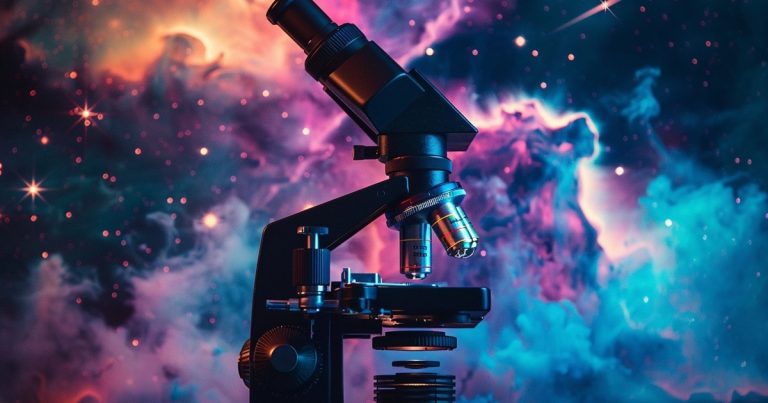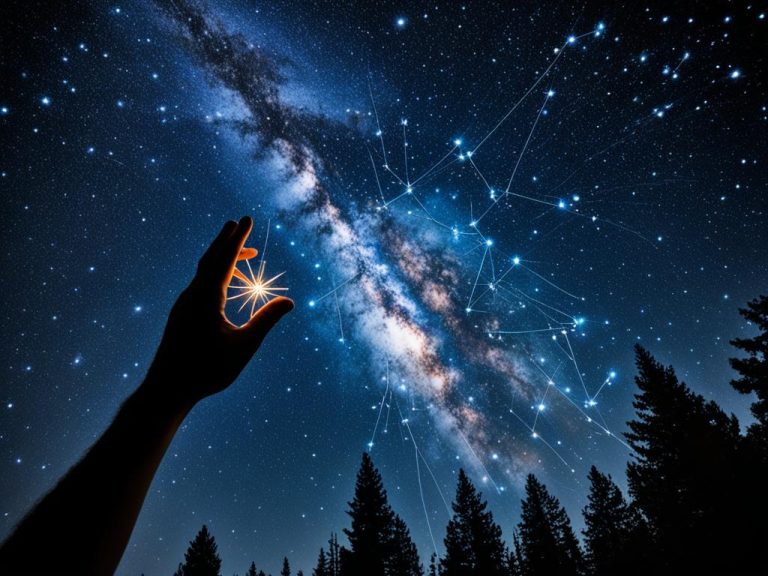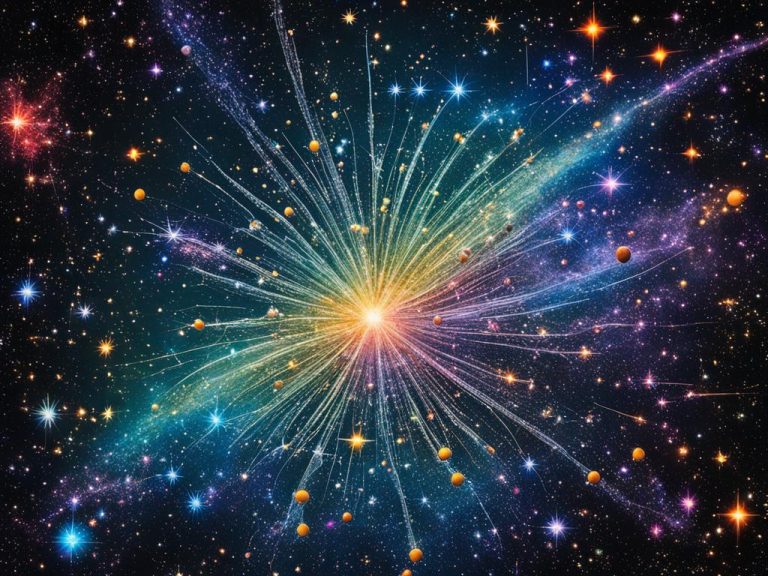Microscopium Constellation
Modified: July 20, 2024 Author: International Star Registry
Did you know the Microscopium constellation is full of amazing stars? It is found in the southern sky. This constellation is not big but it is stunning to see. The constellation was named by French astronomer Nicolas Louis de Lacaille in the 18th century. It’s a great spot for people who love looking at the stars in the Southern Hemisphere.
Lacaille went on a trip to the Cape of Good Hope. There, he mapped the stars in the south and saw new things in the sky. He found the constellation Microscopium. It is right between Sagittarius and Capricornus.
At first, Microscopium may not catch your eye like its famous neighbors. Yet, it draws in those who are interested in finding out more. Because it’s relatively new and not tied to a big story, Microscopium shows how exploring the stars can amaze us.
For those who really love the stars, naming a star in Microscopium would be special. With International Star Registry, you can buy a star for someone. Doing this makes a unique and timeless link between you and the beauty of the night sky.

Key Takeaways:
- Microscopium constellation is a small but fascinating constellation in the southern celestial hemisphere.
- French astronomer Nicolas Louis de Lacaille discovered and cataloged the Microscopium constellation during the 18th century.
- Microscopium is situated between the constellations of Sagittarius and Capricornus.
- Despite its relatively inconspicuous nature, Microscopium offers a unique opportunity for stargazers.
- You can name a star within the Microscopium constellation through International Star Registry.
Locating Microscopium in the Sky
Microscopium is a captivating constellation in the night sky. It’s best seen from the southern hemisphere, especially during the Austral spring. For those in the north, it might be hard to spot. But, with the right telescope and a love for the stars, you can enjoy this hidden gem.
To find Microscopium, look between Sagittarius and Capricornus. Aim for the spot at 21h 00m 00s (right ascension) and -36° 00′ 00″ (declination). Once you know where to look, grab your telescope for an adventure in the night sky.
Looking through your telescope, you’ll see Microscopium like never before. It reveals beautiful patterns and unknown celestial objects. Dive into the awe of this amazing constellation. Let the universe’s secrets inspire your stargazing.
The Stars of Microscopium
Microscopium may not shine as bright as others, but it has its own magic. Look at Gamma Microscopii, for instance. It’s a big, bright star that looks yellow. It’s the main star in Microscopium and is about 220 light-years from us. This star shows us how amazing deep space can be.
Then there’s Beta Microscopii, a cool pair of stars that glow and spin together. This dance is a real treat to watch. Plus, we have HD 202790. It’s famous because it has a planet outside our solar system. These stars and their planets make us want to learn even more about the universe.
But the beauty of Microscopium isn’t just about the stars. There are also these star clusters. Each cluster has lots of stars that twinkle like jewels at night. These clusters help us see the universe’s secrets and the patterns the stars make together.
History and Mythology of Microscopium
Many constellations have stories from ancient times. Yet, the Microscopium Constellation shows a different side of history. It reflects the 18th century’s focus on science. This constellation was named by the French astronomer Nicolas Louis de Lacaille. He didn’t use old myths. Instead, he named it after his own keen observations.
Lacaille explored the southern sky with a telescope in the 1750s. This was during his time at the Cape of Good Hope. He found many new patterns in the stars, including Microscopium. The name “Microscopium” shows his interest in things too small to see without help. It tells about the exciting scientific steps of his time.
Microscopium may not have a long story. But it marks our endless wish to learn and explore beyond Earth. Like a microscope shows tiny details, Lacaille’s telescope revealed more in space. It made us realize how much we still have to discover out there.

The Wonder of Microscopium
Microscopium’s place in the sky is special for those who love stars. It shines in the southern part of the night sky. This spot gives a great view to those in the southern hemisphere. Its exact location makes finding Microscopium simple for interested astronomers. They can easily see its unique groupings of stars.
Despite not being part of old myths, Microscopium is crucial in astronomy. It encourages us to keep exploring the universe. This connects the very small, seen with a microscope, to the incredibly vast, like space.
Naming a Star in Microscopium
Do you want to leave your mark in the night sky? Naming a star in Microscopium offers just that chance. At starregistry.com, there are many naming packages waiting for you. Pick the perfect star gift for birthdays, anniversaries, or to remember someone dear. Naming a star in Microscopium is an everlasting and special choice.
Naming a star in Microscopium is more than a gift. It’s a way to commemorate unforgettable times and make memories that will last forever. It links the beauty of the universe with the special people in your life.
To learn more about the Microscopium constellation, you can check these links:
How to Name a Star in Microscopium
Naming a star in the Microscopium constellation is special. It celebrates great times or remembers someone special. You can make a lasting memory with International Star Registry.
Visit International Star Registry to name a star in Microscopium. Choose from various naming packages. Pick the perfect gift or look at stars in the other 87 constellations.
Looking into the sky knowing a star in Microscopium is named feels nice. It reminds us of the universe’s beauty. It also shows your strong connection with the person you name the star for.
Discover the Microscopium constellation. Make a star in it a part of your legacy with International Star Registry. It’s a perfect present for any occasion.
For more about the Microscopium constellation, check theskylive.com and universeguide.com.
The Perfect Gift – Name a Star in Microscopium
Finding the perfect gift can be hard. But imagine giving something truly unique. Naming a star in the Microscopium constellation is special. It’s perfect for any occasion – birthdays, anniversaries, graduations, and more. This gift is both unique and meaningful.
Microscopium is in the southern skies. It’s filled with beautiful stars. One famous star is AU Microscopium, a red dwarf that’s very old. It adds to the beauty of the night sky.
In the 18th century, Nicolas de Lacaille discovered Microscopium. It’s not one of the modern 88 constellations, but it’s loved by star fans. Lacaille named it after microscopes. This shows respect for tools that let us see tiny parts of our world.
Give a unique gift – name a star in Microscopium. Let its light brighten the sky forever. It’s a perfect gift for friends, family, and partners. This special gesture will be remembered always.

Unlocking the Secrets of Microscopium Constellation
The constellation Microscopium has many secrets for stargazers and astronomers to find. By looking up, you can see the beauty and mysteries of deep space. From star clusters to exoplanets, it shows us the vast universe and our small place in it.
Thanks to space exploration, we know more about the objects in Microscopium. Modern telescopes and spacecraft have helped make big discoveries. These findings have increased our understanding of the universe and the secrets Microscopium holds.
In Microscopium, the NGC 6923 star cluster stands out. It has hundreds of stars held together by gravity. Seeing this cluster helps us learn about star creation and the universe’s evolution.
Microscopium also has exoplanets, planets outside our solar system. They orbit stars in the constellation, hinting at the chance for other habitable worlds. These exoplanets are key for future space exploration and finding alien life.
Studying Microscopium makes us appreciate our cosmos more. The vast space and its objects remind us of the unlimited possibilities out there.
Embrace the Wonder of Microscopium with International Star Registry
Looking up at the night sky fills us with awe. The universe is vast and amazing. The Microscopium constellation stands out with its unique stars and history. International Star Registry is ready to help you connect with this wonder.
At International Star Registry, you can name a star after someone in Microscopium. They make the process easy and meaningful. They have a user-friendly platform for naming stars.
You can pick the perfect name from their different packages. This is a great way to celebrate, remember someone special, or show your love for stars. Naming a star in Microscopium is a special and touching gift.
Whether you’re an expert at looking at the stars or just starting, International Star Registry offers a way to get to know the Microscopium Constellation better. It’s more than naming a star. It’s a chance to learn and love the endless universe.
Conclusion
In the southern hemisphere’s night sky, the Microscopium constellation stands out. Its subtle, yet gorgeous, beauty calls out to those who love the stars. With 43 stars shining brighter than magnitude 6.5, it is a treasure for anyone looking up.
The brightest star in Microscopium is Gamma Microscopii, glowing at a magnitude of 4.68. But there’s more to see than just bright stars. Alpha Microscopii, a yellow giant, and Epsilon Microscopii, a white star, are quite far from us. There’s also a red dwarf, AX Microscopii, very close by at just 12.9 light-years away. It stands out as the brightest red dwarf.
Explore the wonders of the Microscopium Constellation. Take your cosmic trip and see the beauty of the southern skies through a telescope. With its interesting history and the chance to name a star, it’s a special place. Microscopium offers an amazing celestial experience that will enchant and motivate you.
FAQ
Where is the Microscopium constellation located?
The Microscopium constellation sits in the southern sky. It’s between Sagittarius and Capricornus.
Can I observe the Microscopium constellation from the northern hemisphere?
Seeing the Microscopium constellation from the north is hard. It’s best viewed from the south, especially in the Austral spring.
Does the Microscopium constellation have any mythological associations?
This constellation isn’t tied to myths. It was named by French astronomer Nicolas Louis de Lacaille in the 18th century.
What can I discover by exploring the Microscopium constellation?
You’ll find star clusters, exoplanets, and more by looking into Microscopium.
What is the significance of the Microscopium constellation?
It shows our interest in the universe. Its place in the sky tells of our scientific progress in the 18th century.
Source Links
- Microscopium – https://en.wikipedia.org/wiki/Microscopium
- Microscopium – https://www.universetoday.com/21809/microscopium/
